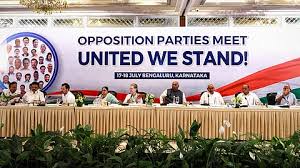India’s democracy thrives on debate, dissent, and the dynamic tension between the ruling party and the opposition. In 2025, this tug of war has grown more intense than ever, as major political forces clash over ideology, governance, and the future of the country.
🏛️ What Is the Role of the Opposition?
In a healthy democracy like India, the opposition is not just meant to oppose. Its purpose is to:
- Hold the government accountable
- Raise public concerns
- Scrutinize policies and bills
- Offer alternative solutions
However, over the past decade, the relationship between the ruling and opposition parties has been marked more by conflict than collaboration.
🇮🇳 The Current Political Landscape (2025)
Ruling Party: Bharatiya Janata Party (BJP)
- Leadership: Narendra Modi, Amit Shah, JP Nadda
- Strengths: Strong central leadership, nationalism narrative, massive digital/media machinery
- Challenges: Anti-incumbency, rising unemployment, farmer protests, global economic uncertainty
Opposition Bloc: INDIA Alliance
- Key Members: Congress, AAP, TMC, DMK, SP, RJD, Left parties
- Strengths: United front in key states, regional strongholds, youth mobilization
- Weaknesses: Leadership vacuum, internal conflicts, lack of consistent messaging
🔥 Key Flashpoints of Power Struggles
- Parliament Sessions:
- Opposition walkouts and disruptions are common during major debates (e.g., on the CAA, farm bills, or electoral bonds).
- Government often bypasses detailed discussions using ordinances or voice votes, frustrating the opposition.
- Use of Investigative Agencies:
- Leaders from opposition parties like AAP, Congress, and TMC have faced ED, CBI, and IT raids.
- Critics allege these are tools for “political vendetta”; the government maintains they’re enforcing the law.
- Media & Narrative Control:
- BJP dominates traditional and social media with targeted messaging.
- Opposition claims lack of fair coverage and growing media bias.
- State vs Centre Conflicts:
- States ruled by opposition parties (Delhi, Tamil Nadu, West Bengal) often clash with the Centre over law enforcement, fund allocation, and governor interference.
🧠 Public Perception: Who’s Winning?
| Factor | Ruling Party (BJP) | Opposition (INDIA Bloc) |
|---|---|---|
| Media Control | ✅ Strong | ❌ Weak |
| Leadership Image | ✅ Modi-led | ⚠️ Fragmented |
| Ground Campaign | ✅ Robust | ⚠️ Improving |
| Policy Narrative | ✅ Consistent | ⚠️ Diverse, scattered |
| Public Trust | ⚠️ Mixed | ⚠️ Growing in urban/youth voters |
📈 2025 Lok Sabha Impact
The battle between the ruling and opposition forces will directly affect:
- Voter turnout and enthusiasm
- Coalition building in post-election scenarios
- Legislation speed and effectiveness in Parliament
- India’s global diplomatic image as a mature democracy
✊ Why This Struggle Matters
The power struggle isn’t just a political drama — it shapes:
- What laws get passed
- How funds are used
- How free the press and institutions remain
- What kind of India we are building for the next generation
📌 Conclusion:
A strong government ensures stability. A strong opposition ensures accountability. In 2025, India needs both — to keep democracy vibrant, inclusive, and resilient.































































